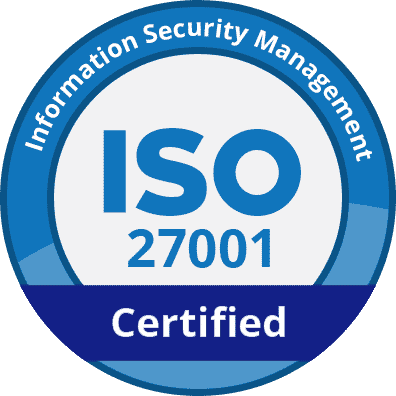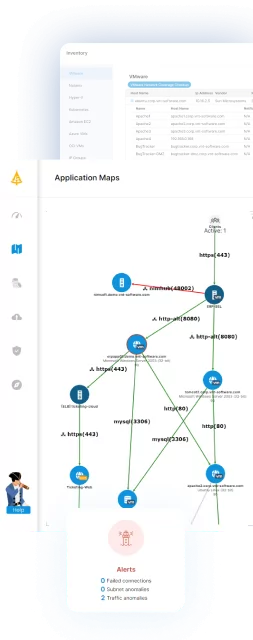What Is SSL Certificate Monitoring?
SSL certificate monitoring is the process of systematically keeping track of SSL certificates to ensure they are functioning correctly, are up to date, and haven’t been compromised. This involves checking for potential issues such as expiration, non-compliance with security standards, or other vulnerabilities that could affect the security of a website.
By actively monitoring SSL certificates, organizations can maintain secure connections and protect user data from interception and unauthorized access. With the growing number of cyber threats, SSL certificate monitoring becomes crucial to mitigate security risks. It helps in identifying potential problems before they can be exploited by attackers.
Regular monitoring ensures timely renewals and can prevent service disruptions due to expired certificates. SSL certificate monitoring acts as a component of an organization’s broader cybersecurity strategy, ensuring the integrity and confidentiality of data transmitted over their networks.
Table of Contents
ToggleCommon SSL Certificate Issues
The need for monitoring arises from several issues associated with SSL certificates.
Expiration
SSL certificate expiration can lead to service disruptions and degrade user trust. When an SSL certificate expires, websites may display warning messages to users, making them wary of proceeding. Failure to renew SSL certificates can result in severe impacts, such as compromised data security and loss of credibility.
Misconfiguration
Misconfiguration of SSL certificates can lead to vulnerabilities and data leakage. Incorrect installation or configuration of certificates can affect the encryption strength, leaving doors open for attackers. Even small missteps, like failing to configure certificate chain settings properly, can cause SSL connections to be insecure or not work at all, impacting website functionality and user trust.
Security Vulnerabilities
SSL certificates can be susceptible to security vulnerabilities, such as protocol downgrade attacks and weak cryptographic algorithms. These issues can undermine the encryption provided by SSL, risking the integrity of transmitted data. Vulnerabilities like heartbleed have exposed the importance of monitoring libraries and implementing timely security patches.

Lanir specializes in founding new tech companies for Enterprise Software: Assemble and nurture a great team, Early stage funding to growth late stage, One design partner to hundreds of enterprise customers, MVP to Enterprise grade product, Low level kernel engineering to AI/ML and BigData, One advisory board to a long list of shareholders and board members of the worlds largest VCs
Tips from the Expert
Tips from the expert:
In my experience, here are tips that can help you better enhance your SSL certificate monitoring and management strategy:
- Implement wildcard and SAN certificate tracking: Monitor the use of wildcard certificates and Subject Alternative Name (SAN) certificates, as they cover multiple domains or subdomains. Mismanagement of these can expose multiple services to risk if a single certificate is compromised.
- Use certificate pinning cautiously: Certificate pinning can prevent the use of fraudulent certificates in man-in-the-middle attacks. However, improper implementation may lead to application failures if certificates are updated. Ensure robust processes for updating pinned certificates to avoid disruptions.
- Monitor cryptographic algorithm changes: Continuously review certificates for deprecated algorithms, such as SHA-1, which may no longer meet security standards. Update certificates to use modern algorithms like SHA-256 or stronger to ensure ongoing compliance and security.
- Assess certificate authority (CA) reputation and practices: Periodically evaluate the trustworthiness of your chosen CAs. Ensure they follow strict issuance practices and align with industry standards like CA/Browser Forum Baseline Requirements to minimize risks of misissued certificates.
- Automate certificate renewal with ACME protocols: Leverage the Automated Certificate Management Environment (ACME) protocol, used by tools like Let’s Encrypt, to automate SSL certificate renewal. This reduces manual effort and ensures certificates are always up-to-date.
Methods of SSL Certificate Monitoring
Organizations can use manual or automated techniques to monitor SSL certificates.
Manual Monitoring
Manual monitoring involves human intervention to periodically check the status of SSL certificates. This method requires administrators to track certificate expiry dates and manually inspect certificates for any configuration issues.
While manual monitoring is cost-effective for smaller setups, it is prone to human error and oversight, especially in environments with numerous certificates, leading to potential security risks if a certificate is missed. However, it can be a way for organizations with limited resources to maintain oversight of their SSL certificates.
Automated Tools
Automated tools simplify SSL certificate monitoring by continuously tracking the status of certificates, identifying potential issues, and notifying users about necessary actions. Key features of automated SSL certificate management tools include:
- Continuous monitoring: Running 24/7 checks on certificates to identify chain validity, expiration dates, and cryptographic weaknesses.
- Real-time notifications: Most tools send alerts via multiple channels, such as email, SMS, Slack, or webhooks, when certificates are close to expiration or have configuration issues.
- Detailed analytics: Reporting and analytics to monitor SSL performance, enabling proactive troubleshooting.
- Integration options: Many tools integrate with monitoring tools like Prometheus and cloud platform like AWS and Azure, offering a seamless experience for DevOps teams.
- Discovery and auto-renewal: Tools can automatically discover and track new certificates, and typically use protocols like ACME to enable auto-renewals.
Best Practices for SSL Certificate Monitoring
Organizations should consider the following practices to ensure thorough monitoring of SSL certificates.
Implement Automated Alerts
Automatic notifications for certificate expiry or configuration issues allow swift action to maintain security standards. Automation tools can track expiration dates and other certificate parameters, issuing alerts in advance to prevent service interruptions. By automating alert systems, organizations can maintain operational continuity.
Automated alerts minimize human dependency in monitoring tasks, reducing the likelihood of oversight and ensuring timely remediation of issues. They also allow IT teams to focus on other critical tasks, enhancing overall efficiency. Implementing such alerts as part of a broader cybersecurity strategy ensures SSL certificates are consistently updated and compliant.
Maintain an Inventory of Certificates
An organized inventory helps track certificate issuance, expiry, and renewal processes. It provides a centralized view of all deployed certificates, aiding in systematic management and reducing the risk of forgotten or expired certificates. This inventory should include details like certificate type, issuer, and associated domains or IPs.
A certificate inventory allows for more effective monitoring and management, ensuring timely actions can be taken for renewals or addressing issues. Using asset management tools or platforms, companies can automate the tracking of certificates, linking them with monitoring systems for real-time updates.
Regularly Update and Renew Certificates
Outdated certificates can weaken encryption, potentially leading to unauthorized access or data breaches. Organizations should have processes in place to track expiration dates and ensure timely renewals, avoiding unexpected lapses in certificate validity that could hamper security and website accessibility.
To effectively manage certificate lifecycles, organizations can use automation tools or platforms that offer alert mechanisms for upcoming expirations. Regular updates ensure adherence to the latest encryption standards and protocols, maintaining defenses against evolving cyber threats.
Monitor Certificate Transparency Logs
Certificate transparency (CT) is a framework that requires public logging of SSL/TLS certificates by certificate authorities. By keeping track of CT logs, organizations can detect and respond to fraudulently issued certificates, preventing man-in-the-middle attacks and identity misrepresentation.
Regularly reviewing CT logs can also help in detecting errors or oversights by certificate authorities, ensuring only legitimate certificates are in use. This proactive measure adds a layer of accountability and insight into certificate issuance. Automated tools can assist in monitoring these logs, providing alerts on suspicious certificate activities associated with their domains.
Integrate Monitoring into DevOps Processes
Integrating SSL certificate monitoring into DevOps processes ensures continuous security oversight during development cycles. This integration allows for the automatic deployment and renewal of certificates during code releases, ensuring they are always up to date. By embedding monitoring practices into DevOps workflows, organizations can catch configuration errors early.
DevOps integration fosters a culture of collaboration between developers and IT, simplifying SSL certificate management. It ensures that security checks are a part of the software development lifecycle, minimizing the risk of deploying services with insufficient or misconfigured SSL certificates.
Integrate with SIEM Systems
Security information and event management (SIEM) systems provide comprehensive oversight by correlating certificate events with broader security data. SIEM platforms can aggregate and analyze data from various sources, offering a unified approach to managing SSL certificates alongside other security components.
By having SSL certificate events within their SIEM framework, organizations can quickly identify and resolve security issues like expired certificates or misconfigurations. SIEM integration promotes faster incident response, as potential threats can be detected in real time through correlated security events.
Related content: Read our guide to SSL certificate management
SSL Certificate Management with Faddom
Managing SSL certificates effectively is essential to maintaining a secure and efficient IT infrastructure. Still, it can be complex and resource-intensive, especially in hybrid and multi-cloud environments. This is where Faddom simplifies the challenge.
Faddom’s agentless application dependency mapping platform provides comprehensive visibility into your infrastructure, including SSL certificate usage and dependencies. With Faddom, you can:
- Identify Expired or Misconfigured Certificates: Ensure all certificates are properly configured and updated with continuous monitoring and detailed reporting.
- Streamline Change Management: Assess the impact of SSL certificate changes across your IT environment to avoid service disruptions.
- Enhance Cybersecurity: Detect vulnerabilities tied to SSL certificate mismanagement and mitigate risks before they escalate.
- Integrate Seamlessly: Use Faddom’s integrations with SIEM tools like Splunk and ServiceNow to centralize SSL certificate monitoring within your broader cybersecurity framework.
With deployment in under 60 minutes, Faddom enables organizations to address SSL certificate management as part of a unified IT visibility and control approach.
Take control of your SSL certificates and IT environment today—start your free license trial!









